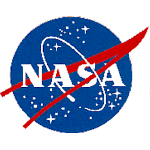

The GEOS 2 (Geodetic Earth Orbiting Satellite) spacecraft was launched on April 28, 1968. This satellite was one of the earliest geodetic missions initiated by NASA and served serveral purposes. First, GEOS-2 carried flashing lamps which allowed it to be photographed (like GEOS-1 by a globally distributed network of optical observatories. At the time, the National Geodetic Satellite Program had the objective to unify the world's tracking datums to the five to ten meter level of uncertainty with respect to the geocenter. It was the analysis of this early optical data that satisfied these objectives (NASA, 1977; Marsh et al., 1973). In addition, the satellite was used for calibration of NASA's Minitrack Network. Finally GEOS-2 carried corner cube retroflectors, and served as a target of opportunity for early laser ranging experiments.
GEOS-2 was intermittently tracked on a low priority basis by the lasers for the early to mid-1970's. Some selected arcs of GEOS-2 satellite laser ranging (SLR) data were included in GEM-T1, and later GSFC Earth gravity solutions.
Marsh J. G. et al., "A global station coorindate solution based upon camera and laser data-GSFC 1973", NASA Report X-592-73-171, 1973; Also published in Proceedings of the first International sysmposium on the use of artificial satellites for geodesy and geodyanmics, Athens, Greece, May 1973.
National Geodetic Satellite Program, NASA Special Publication SP-365, Washington, DC, 1977.
 back to Description of Satellite Data.
back to Description of Satellite Data.
